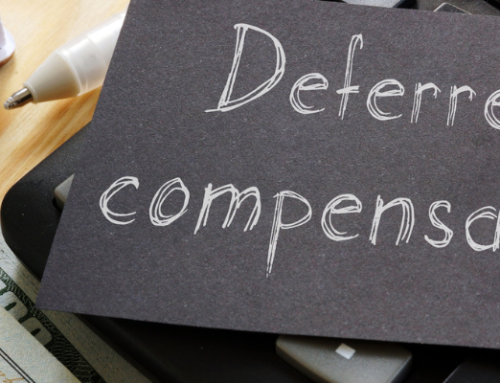Even in today’s economic environment there are many companies, both start-up and established, that are looking to do business with the Federal government and its various agencies. To be successful it is essential that these companies recognize that contracting with the Federal government requires more of their accounting system and associated internal controls than those companies dealing only in the commercial marketplace.
Government contract accounting while based on Generally Accepted Accounting Principles (GAAP), places less emphasis on traditional “debits and credits” and more emphasis on:
- Identification of costs as direct and indirect costs,
- Collection of direct costs by contract, contract line item number (CLIN) or other interim or final cost objective,
- Establishing a method of allocating or assigning indirect costs to contracts, contract line item numbers (CLIN) or other interim or final cost objectives,
- Identification and segregation of unallowable costs,
- Development and implementation of a labor recording system applicable to all employees,
- Existence of policies and procedures documenting all aspects of the accounting process, and
- A Code of Ethics and Business Conduct.
The requirements for an adequate accounting system are defined in the Federal Acquisition Regulation (FAR) at: 9.104-1(e), Responsible Prospective Contractors – General Standards; 16.301(a)(1), Cost Reimbursable Contracts; Part 31, Contract Cost Principles and Procedures; and the Defense Federal Acquisition Supplement (DFARS) at 252.242-7006, Accounting System Administration. If a contractor is proposing on a government contract, especially those that contain or might contain cost reimbursable efforts, they must be able to certify that their accounting system is compliant with these regulations and adequate for government contracting as defined at 53.209-1(f), Preaward Survey of Prospective Contractor Accounting System (SF1408). If they cannot make this certification or pass a preaward audit as would be performed by a cognizant government auditor they will not be awarded a government contract.
Compliance with these requirements, while not an impossible task, becomes even more complex of an issue if the company intends to have a mix of government and commercial contracts.
Following is a discussion of each of these areas essential to the development and implementation of an adequate cost accounting process for government contracting.
Identification of Direct and Indirect Costs
The accounting process must be established to allow identification of all costs incurred as either direct costs incurred “directly” as the result of contractual efforts (FAR 31.202) or indirect costs incurred in support of business operations and not identifiable with any specific contractual commitments (FAR 31.203). Direct costs are “but for” costs incurred solely in response to actual or anticipated contract requirements – without the contractual requirement the costs would not be incurred. Costs incurred for the same purpose in like circumstances must be either direct costs or indirect costs, they cannot be both (FAR 31.203(b)). Once identified, they must be recorded in specific General Ledger accounts established for accumulating these costs.
Collection of Direct Costs by Contract or Cost Objective
Once costs have been identified as direct costs the accounting process needs to be able collect these costs by the contract, contract line items (CLIN), or cost objective for which they were incurred in what is called a “job cost ledger.” Direct costs incurred relative to contractual commitments need to be collected in the same detail as proposed and negotiated. Costs can be recorded in more detail but not less detail on government contracts. This allows for the tracking and comparison of actual costs to costs proposed and negotiated. Establishment of appropriate charge numbers consistent with the contractual work breakdown structure (WBS) is a critical cost accumulation and control process.
Allocating or Assigning Indirect Costs to Contracts or Cost Objective
Indirect costs are not identifiable to any one contract or cost objective, they are support costs that need to be allocated or assigned to the direct efforts that they support. Indirect costs should be accumulated in homogeneous pools of cost and related to direct costs that have a “cause and effect” relationship to the pooled indirect costs (FAR 31.203). As an example fringe benefit costs that are incurred for the benefit of your employees have a relationship to direct labor, general and administrative expenses are related to all of the efforts incurred in performing on contracts and other cost objectives. These allocations are expressed as a percentage of the base over which they are allocated. During a given fiscal year all indirect costs incurred must be allocated to all direct costs incurred. There should be no residual indirect expenses not allocated.
Identification and Segregation of Unallowable Costs
There are certain costs incurred by contractors that the Government will not reimburse. These unallowable costs are defined in FAR 31.201-2 and identified in FAR 31.205, Selected Costs, or possibly in your contract. Expressly unallowable (those specifically identified in FAR 31.205 or agreed to be unallowable costs along with directly associated costs (those normally allowable costs incurred as a direct result of incurring an unallowable cost) must not be included as a direct or as an indirect cost in any billing, claim or proposal to the Federal government (FAR 31.201-6). Penalties are associated with non-compliance with this requirement. Account or charge numbers must be established to segregate unallowable costs within the accounting system. Unallowable costs incurred as a part of an established allocation base must remain in the allocation base to absorb their allocated share of indirect costs.
The reality of unallowable non-recoverable costs is difficult for companies in the commercial marketplace to understand. It is the responsibility of all employees to recognize that costs being incurred are not recoverable and directly impact the organizations profitability. The best practice is to not incur these costs at all.
Development and Implementation of a Labor Recording System
Labor generally represents one of the most significant costs incurred by a contractor. It is essential that a labor recording process be established that is applicable to all employees, direct and indirect, recording the total hours worked by each employee by authorized account and/or charge number. Every employee should record their time at a minimum on a daily basis indicating the time spent on both direct, if applicable, and indirect activities including sick-time, vacation, and etc. The process for recording hours may be manual or electronic and must include the ability to track all changes made to the hours as initially recorded documenting who made the change and why. All time recorded must be approved by the employee and his or her supervisor before processing.
Existence of Policies and Procedures
Even if a contractor is compliant with all of his accounting processes he must maintain written policies and procedures documenting responsibilities and established policies and practices. When evaluating a contractors accounting system adequacy the first thing reviewed by the Government auditor are the established policies and procedures. They are also an insurance policy providing guidance that compliant accounting practices will be performed consistently from period to period.
A Code of Business Ethics and Conduct
The Government also looks for an established Code of Business Ethics and Conduct defined at FAR 52.203-13. The Code must be in writing and made available to all involved employees. Larger contractors need to provide training for all involved employees, agents and subcontractors. The company must exercise due diligence in preventing and detecting criminal conduct and promptly disclose any non-compliances to the appropriate Government agency. The appropriate Hotline Posters must be displayed.
Whatever your accounting process, even if it is manual, be sure to include these basic requirements to ensure compliance and to increase your ability to become successful. If you are preparing to propose on a government contract or are anticipating performing in the government prime or subcontracting marketplace you should obtain an independent assessment of the adequacy of your accounting processes and practices to account for costs in accordance with the requirements reflected in the FAR and the DFARS.





